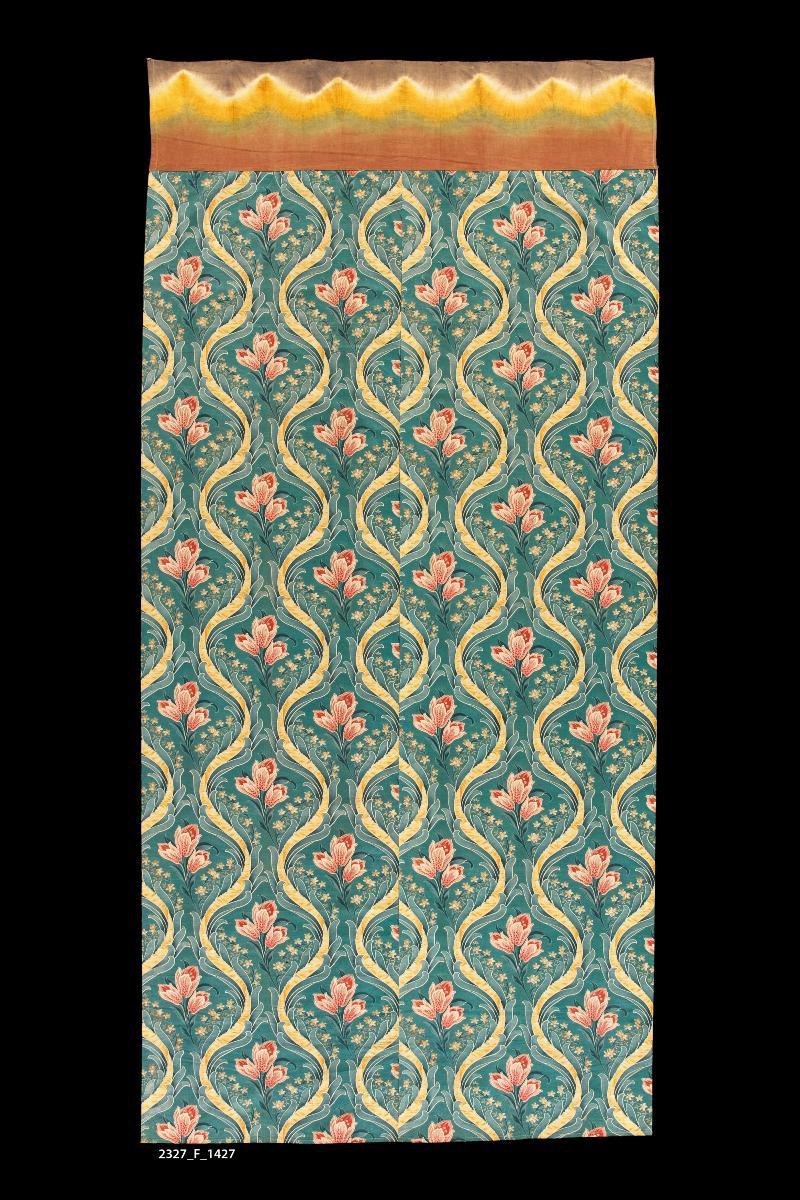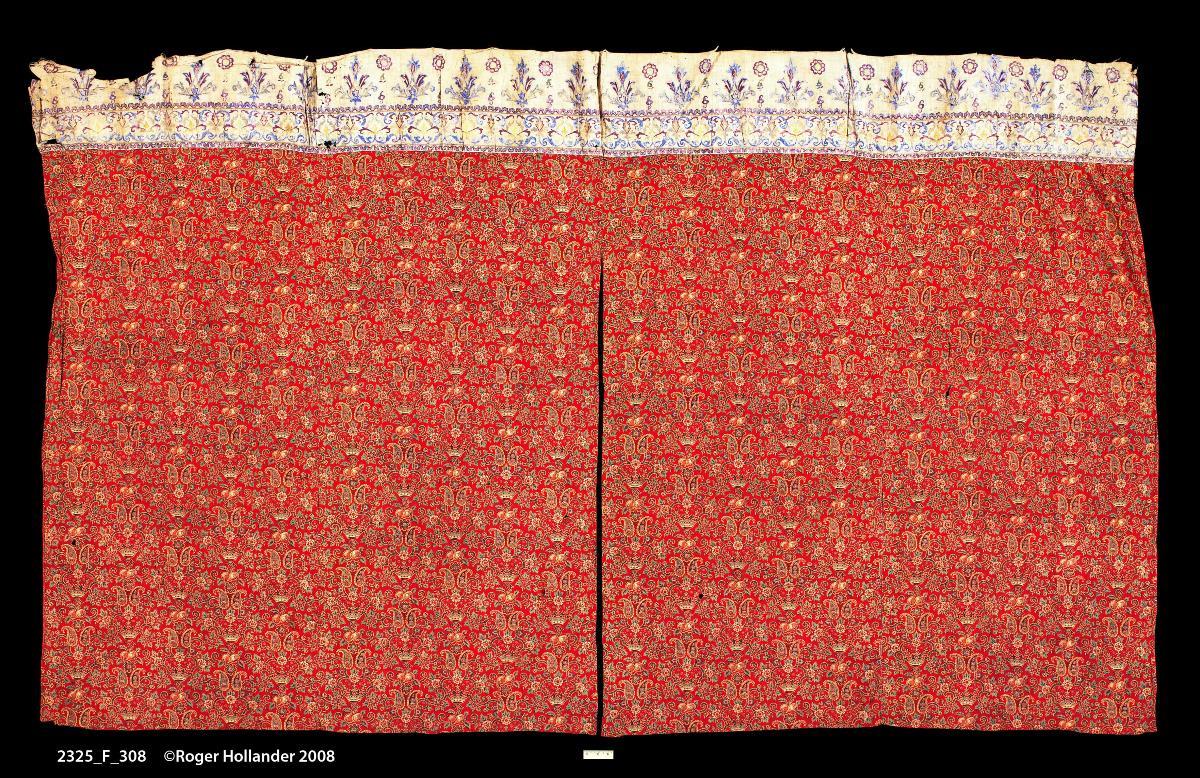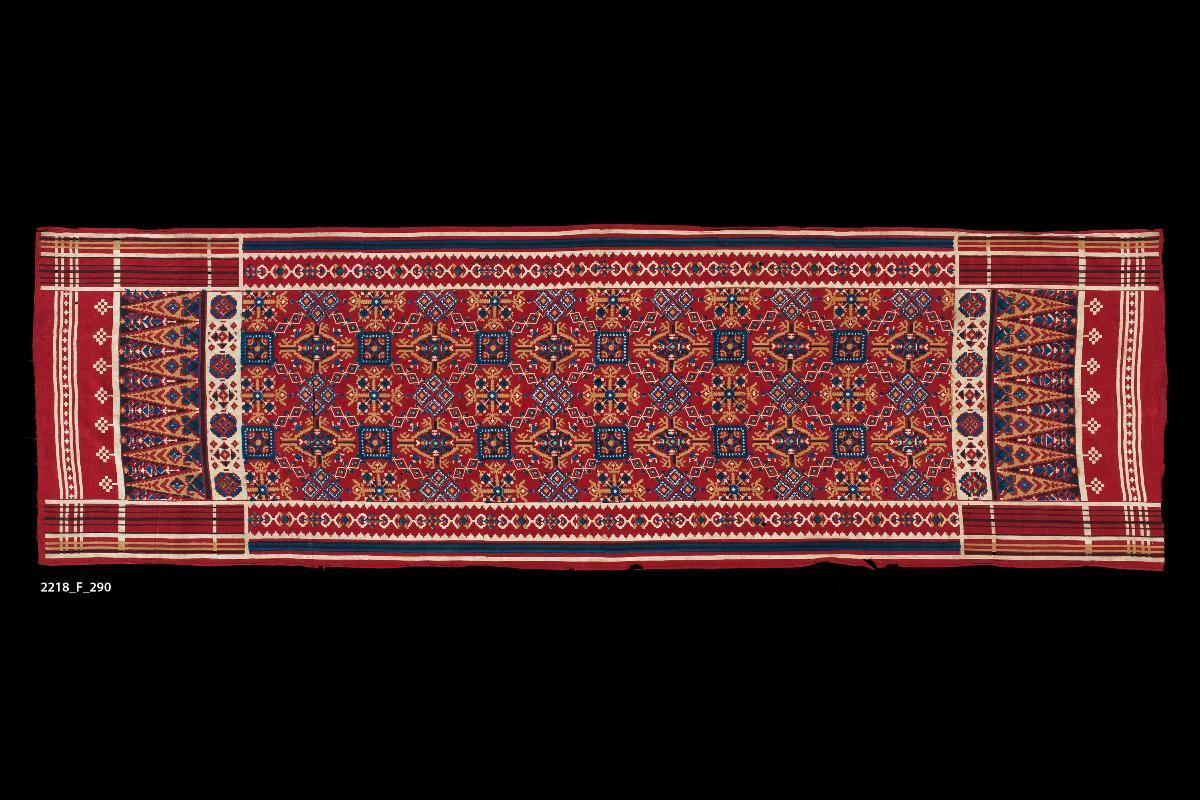Thi sritual hanging is made up of two sections of printed cotton tabby fabric machine stitched together to form wide horizontal bands, with an added section of tie dyed cotton sewn to one edge. The print is an Art Nouveau floral pattern of red tulips with yellow ribbons on greenish-blue.Large quantities of Indian textiles produced in various centres in Gujarat, the Deccan and Coromandel Coast were traded across Southeast Asia until the end of the 19th century. Among their functions, they served as attire for royalty and as diplomatic gifts, as displays on festive occasions, and as clothing for the populace at rites of passage and other ceremonies. These trade cloths had a strong influence on the development of Southeast Asia textiles as it is thought local makers began producing cloth, possibly borrowing patterns and motifs from earlier Indian examples, to make up for the shortage of the Indian ones that began to decline in numbers.















